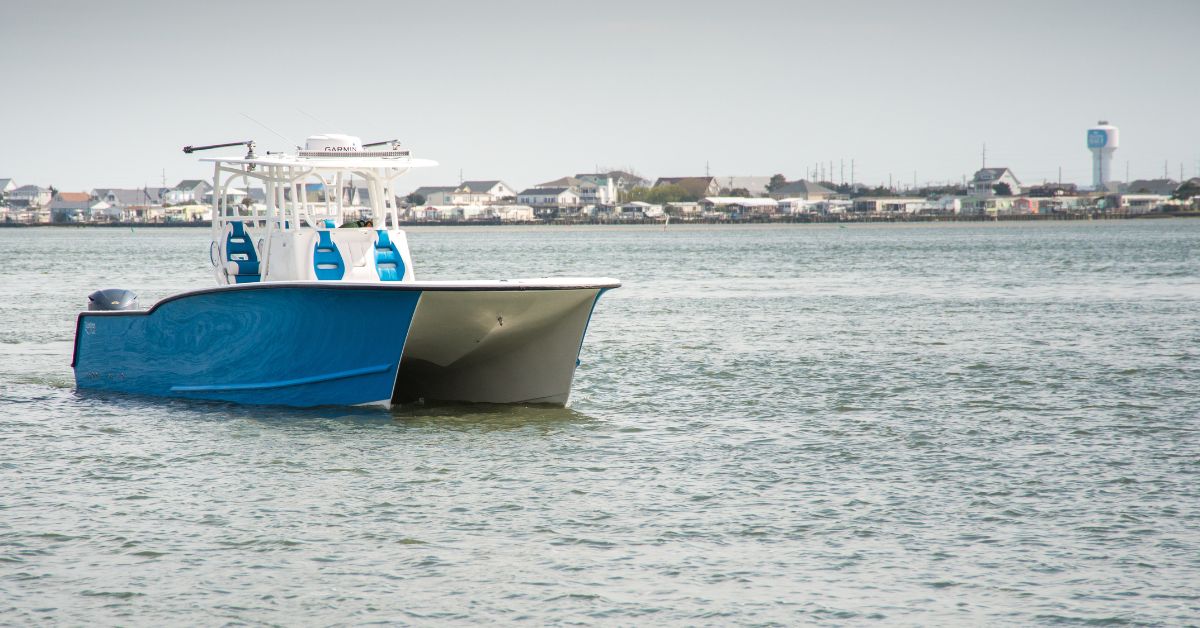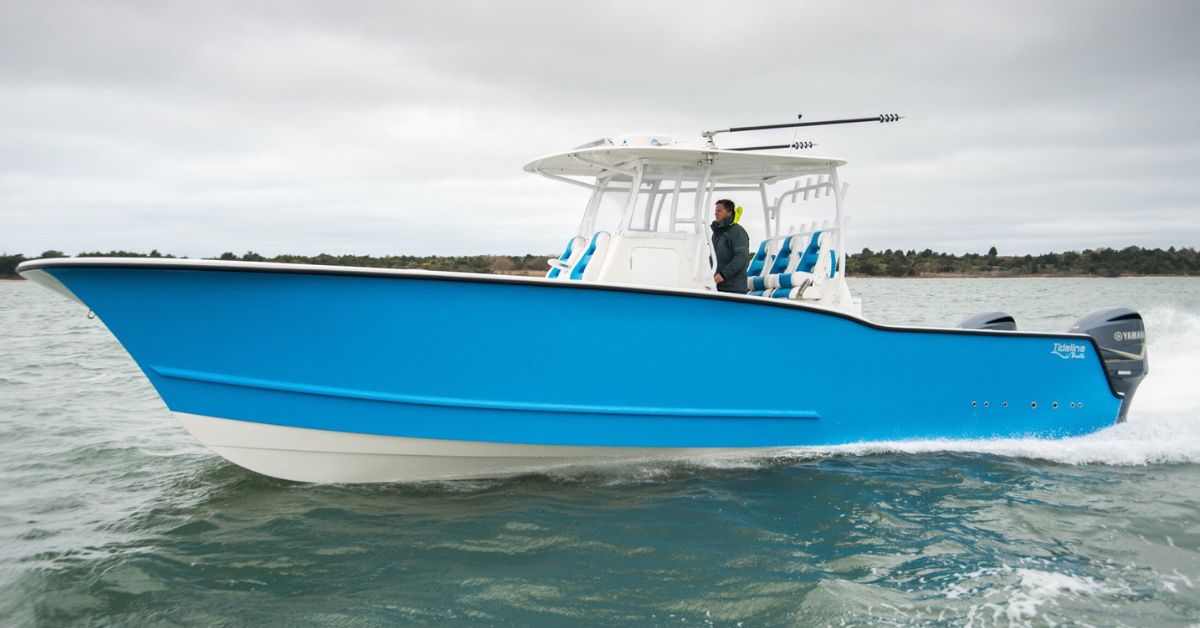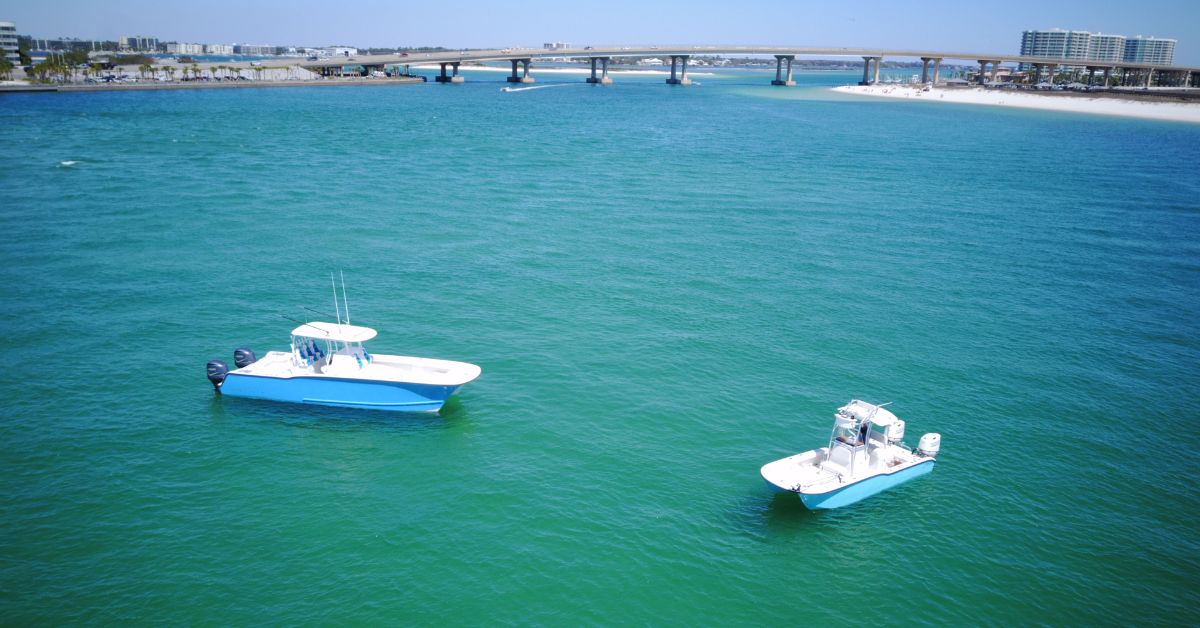Your boat choice can make or break your time on the water. Two popular options that often confuse buyers are bay boats and offshore boats. While both meet fishing and boating needs, they work best in very different environments.
Bay boats are ideal for shallow, protected waters like bays, estuaries, and flats, offering great maneuverability and shallow draft capabilities. Offshore boats, however, are perfect for the open ocean, with deep-V hulls and sturdy construction to handle large swells and rough seas.
Understanding the key differences between bay boats and offshore boats will help you choose the right vessel based on your boating style, fishing locations, and budget. Whether you’re chasing redfish in marshes or heading offshore for marlin, picking the right design is essential for safety, performance, and enjoyment.
What Is a Bay Boat?
Bay boats are specialized watercraft designed specifically for shallow water fishing and cruising in protected coastal areas. These versatile vessels typically feature flat or modified-V hulls that allow them to operate in water as shallow as 10 to 18 inches. This makes them perfect for navigating oyster bars, grass flats, and backcountry marshes.
The construction of bay boats prioritizes functionality and efficiency over luxury amenities. Most models range from 18 to 26 feet in length and feature wide, stable platforms that provide ample casting space for anglers. The shallow draft design allows access to prime fishing spots that deeper boats simply cannot reach, opening up a world of inshore fishing opportunities.
Modern bay boats often incorporate advanced features like tunnel hulls, which further reduce draft while maintaining performance, and poling platforms that enable silent stalking of wary fish in ultra-shallow water. The outboard motor configuration is standard, typically featuring single or twin engines that you can tilt up to navigate extremely shallow areas or to beach the boat.
What Is an Offshore Boat?
Offshore boats are purpose-built vessels designed to handle the demanding conditions of open ocean waters. These boats feature deep-V hulls with deadrise angles of 20 to 24 degrees, allowing them to cut through waves and provide a smoother ride in rough seas.
The construction of offshore boats emphasizes strength, seaworthiness, and passenger comfort during long runs to distant fishing grounds. These vessels typically range from 25 to 60 feet or more, with larger models offering enclosed cabins, advanced electronics, and creature comforts necessary for extended offshore excursions.
Offshore boats can handle the stresses of big water boating, featuring reinforced transoms, heavy-duty through-hull fittings, and robust electrical systems capable of powering sophisticated fish-finding and navigation equipment. The hull design sacrifices shallow water capability for superior rough-water performance, typically requiring at least three to four feet of water to operate safely.
Multiple outboard engines are common on offshore boats, providing the power necessary to reach distant fishing grounds quickly while offering redundancy for safety. The fuel capacity of these vessels is substantially larger than bay boats, often holding several hundred gallons to support long-range fishing trips.

Bay Boat Advantages
Bay boats offer numerous advantages for anglers and recreational boaters. They are ideal for those who primarily operate in protected waters.
Shallow Draft Capability
The shallow draft capability is the most significant benefit, allowing access to productive fishing areas that remain off-limits to deeper-hulled vessels. This access advantage translates directly into fishing success, as many prized inshore species inhabit the shallowest water.
Fuel Efficiency
The fuel efficiency of bay boats makes them economical to operate, as their lighter weight and efficient hull designs require less power to achieve plane and maintain cruising speeds. The wide beam and stable platform design provides excellent fishing conditions, allowing multiple anglers to cast comfortably without interfering with each other.
Maintenance Costs
Maintenance costs typically run lower for bay boats due to their simpler systems and single-engine configurations. The shallow draft also reduces the risk of prop damage from underwater obstacles, and the ability to beach the boat provides convenient access for cleaning and maintenance tasks.
Storage and Trailering
Storage and trailering advantages make bay boats appealing to recreational boaters with limited slip availability or those who prefer to keep their vessels at home. Standard pickup trucks can tow most bay boats, and owners can typically store them in a residential driveway or garage.
Offshore Boat Advantages
Offshore boats excel in conditions where bay boats struggle, making them the clear choice for serious blue-water anglers. The superior rough-water handling capability allows these vessels to maintain reasonable comfort and safety even when seas build beyond the comfort zone of smaller, shallow-draft boats.
Extended Range Capability
The extended range capability of offshore boats opens up fishing opportunities that are simply impossible with bay boats. The ability to run miles from shore provides access to deep-water species like tuna, marlin, and mahi-mahi that rarely venture into the shallower waters where bay boats operate.
Speed and Power
Speed and power are significant advantages for offshore boats. Their robust construction and powerful engine packages allow them to reach distant fishing grounds quickly, maximizing time spent fishing rather than traveling. This speed advantage becomes crucial when dealing with limited weather windows or when trying to reach specific GPS coordinates before other boats arrive.
Safety
Offshore boats offer unparalleled safety benefits. The deep-V hull design, higher freeboard, and substantial construction provide confidence for boaters dealing with unexpected weather changes or mechanical issues far from shore.

Disadvantages of Bay Boats and Offshore Boats
Bay Boats
Bay boats face limitations that restrict their versatility in varying water conditions. The shallow-draft design becomes a liability in rough conditions. The relatively flat hull provides a harsh, pounding ride when seas exceed two to three feet. The limited fuel capacity restricts range, making lengthy offshore excursions impractical or impossible.
The lightweight construction that contributes to fuel efficiency also means bay boats offer less protection from the elements and can feel less substantial in challenging conditions. Additionally, limited storage space restricts the amount of gear and supplies that you can carry for extended trips.
Offshore Boats
Offshore boats present their own set of challenges, starting with significantly higher purchase prices and operating costs. The fuel consumption of large outboard engines can make casual day trips expensive, and marina slip fees for larger boats often exceed the monthly payments on smaller vessels.
The deep draft requirements limit access to shallow fishing areas, potentially missing out on excellent inshore fishing opportunities. The size and weight of offshore boats require larger tow vehicles and specialized trailers, increasing the total investment required and limiting storage options for many boat owners.
Finding Your Perfect Match
When weighing the differences between bay boats and offshore boats, it’s best to consider your specific boating priorities and local water conditions. Your budget, storage capabilities, and towing requirements also play crucial roles in determining which boat type aligns with your practical needs.
If you can’t decide between the two, check out Tideline Boats’ hybrid bay boats. With their innovative design, our hybrid vessels seamlessly combine the versatility of a bay boat with the robust capabilities of an offshore vessel. Our custom-built fishing catamarans offer remarkable stability, fuel efficiency, and ample space, making them perfect for navigating shallow inshore waters as well as tackling the challenges of open seas. Contact us today to build your dream hybrid boat!


